EARLY HISTORY – THE SEA NOMADS – BAJAU SAMA, SABAH, BORNEO
- Marwan Bin Musa
- Feb 26
- 5 min read
EARLY HISTORY – SEA NOMADS – BAJAU SAMA, SABAH, BORNEO
The Badjoo, Bajus, Bajo, Badjao, Badjau, Bajao, Bajaw, Bajak Laut, Orang Laut, Orang Selat, Sama Laut, and Sea Gypsies are various names referring to an indigenous ethnic group in Sabah, known as the Bajau. This indigenous group is the second-largest ethnic group in Sabah after the Kadazandusun. The Bajau people are a culturally rich ethnic group in Sabah, with unique ancestral origins and customs.
Many anthropologists have been intrigued by the history of the Bajau, as numerous theories about them exist, yet none provide a clear and easily understood explanation.
Christian Perlas (2006) stated that "Orang Bajo are a maritime community that practices a sea-based way of life."
A renowned Western researcher, Dr. Healry, once wrote the following statement about the Bajau people:
"They are a colorful people in many ways, combining a skill at weaving and good carving with good horsemanship, and in former days a propensity for piracy, which subsequently gave place to cattle lifting."
When we attempt to explore and understand the Bajau people, it is essential to recognize that the term "Bajau" refers to two distinct groups. This is because the Bajau people are divided into two main sub-groups: the West Coast Bajau and the East Coast Bajau.
Since the Bajau people inhabit two different coastal regions in Sabah—west and east—there are variations in aspects such as dialects, culture, and customs. These differences are evident in their speech, traditional attire, customs, and traditions. From a geopolitical perspective before the era of British North Borneo Company (SBBUB), the West Coast Bajau were directly influenced by the Brunei Sultanate, whereas the East Coast Bajau were influenced by the Magindanau Sultanate and the Sulu Sultanate.
Additionally, according to Le Bar (1920), the Bajau people consist of more than 190 sub-ethnic groups, including Orang Laut, Bajau Sama, Bajau Kubang, Bajau Omadal, Bajau Simunul, Bajau Ubian, and others.
Population and Settlement
The West Coast Bajau mainly reside in areas such as Tempasuk, Abai, Pendasan, Mengkabong, Inanam, Darau, Menggatal, Likas, Sembulan, Tanjung Aru, Petagas, Putatan, Kinarut, Kawang, and Papar.
Meanwhile, the East Coast Bajau primarily settle in Sandakan, Lahad Datu, Semporna, Kunak, and Tawau.
In the Philippines, the Bajau population is concentrated in Zamboanga and its surrounding islands, including Basilan, Jolo, Siasi, Tawi-Tawi, and Sibutu.
In Indonesia, the Bajau people primarily inhabit the eastern coastal regions of Sulawesi.
Surprisingly, Bajau communities can also be found in Australia. According to historical records, the Bajau people have existed in Western Australia for approximately 200 years due to their nomadic lifestyle and economic factors that led them to settle there. The primary settlement areas include Perth, Port Hedland, Katanning, Geraldton, Shay Gap, Kathara, Albury, Broome, and Tom.
How the Name "Bajau" Came to Be
Due to intense anthropological interest in studying the Bajau, various theories about the origin of the term "Bajau" have emerged.
According to Sopher, the term "Bajau" originates from the Bugis word "Waju", which means "people who move in groups."
Sopher’s opinion is supported by John Crowford, who described the Bajau as "men that go in troops."
Meanwhile, Ben J. Wallace argued that the term "Bajau" is a shortened form of "Bajak Laut" or "Baja Laut," meaning "pirates."
Local anthropologist Dr. Hasan Mat Nor believes that "Bajau" comes from the word "berjauhan" (distant), reflecting their way of life—always far from land. This theory is reinforced by Yap Beng Liang’s fieldwork in Semporna, who agrees that "Bajau" is derived from "berjauhan" since they historically lived at sea, away from land.
However, the term "Bajau" was actually given by outsiders. The Bajau people prefer to call themselves "Sama" or "A’asama." This is confirmed by anthropologist Santher, who stated:
"...the generic label they apply to themselves, at least in Sabah, is Sama or A’asama, or dialect variants of these terms… To my knowledge, Bajau and Samal are never used in self-reference among the Sama themselves, although most know these terms are used by outsiders and frequently use them when speaking to non-Sama."
West Coast Bajau and East Coast Bajau
In Sabah, the Bajau people are generally categorized into two groups:
West Coast Bajau (Bajau Darat)
East Coast Bajau (Bajau Laut)
Although both groups originate from the same lineage, they have distinct differences in physical traits, culture, and customs.
According to I.H.N. Evans, the Bajau people belong to a Proto-Malay maritime group (I.H.N. Evans, Among Primitive Peoples in Borneo, London: Seeley Service & Co. Ltd, 1922).
One common misconception is the term "Sabah Cowboys," which actually refers to the West Coast Bajau (Bajau Darat). This group is highly skilled in horse riding, often depicted in images showcasing their equestrian abilities. Unlike the Bajau Laut, they do not live on boats but instead have permanent settlements on land.
The Bajau Laut (also known as Palau) are sea nomads whose entire lifestyle revolves around their boats. They are commonly seen dominating the marine regions, especially around Semporna, Sabah. Over time, some Bajau Laut have transitioned to living on land, such as in Kampung Bangau-Bangau, although they remain a minority.
Bajau Origins Based on Two Theories
Several theories attempt to explain the migration of the Bajau people to Sabah. These theories differ due to varying sources and research conducted by anthropologists worldwide. The primary theories are:
The Bajau originated from the Southern Philippines
The Bajau originated from Johor-Riau-Lingga
Based on historical records, the Johor-Riau-Lingga theory is the most widely supported due to documented evidence from early explorers such as Thomas Forrest (1779), S.E. Dalrymple (1884), and Cyrill Alisston (1966). Their records indicate that Bajau fishermen originally came from Johor and Riau-Lingga before migrating to Borneo and the Sulu region.
Conclusion
Historical records and oral traditions suggest that the Bajau people most likely originated from Johor-Riau-Lingga, but various migration waves led them to settle in different regions, including Sabah, Indonesia, and the Philippines.
Sopher’s migration theory aligns with the rise of Brunei as a trade hub, which attracted Bajau people for their marine resource trade.
From a linguistic perspective, West Coast Bajau and East Coast Bajau belong to the Austronesian language family, with distinct language classifications.
Today, 99% of the Bajau population in Sabah are Muslims, although some of their traditional customs, such as the Lepa-Lepa Festival, are still preserved.
References:
1. Hanafi Husin. Rencana: ”Diaspora Bajau Laut dan Pengekalan Serta Penerusan Amalan Tradisi Di Sabah”. Publisher: Borneo Research Journal 2 (2008)
2. David E. Sopher. Title: A Study Based On The Literature Of The Maritime Boat People Of Southeast Asia. 1972
3. I.H.N. Evans. Rencana: Among Primitive Peoples In Borneo. Publisher: London: Seeley Service &Co.
4. Irena Obon. Rencana: The Sama Horseman. Publisher: Persatuan Seni Budaya Bajau Sabah, 1999
5. Dayang Yus Sabariah bt Haji Adanan. Rencana: Persinambungan Keluarga Diraja Brunei Dengan Keluarga Diraja Tanah Melayu. Publisher: PESAKA, Berita Jabatan Pusat Sejarah, Kementeria Kebudayaan Belia & Sukan, Negara Brunei Darussalam, (1988)
6. Yap Beng Liang. Buku : Orang Bajau Pulau Omadal
7. The Peoples Of the World Foundation – The Bajau People
8. Gusni Saat - Sama Bajau Dalam Kanca Urbanisasi, (2010)
9. Saidatul Nornis Hj Mahali - Bajau Pantai Barat, Bajau Pantai Timur (2012)
10. Mohd Anis Md Noor - Perspective on Bajau/ Sama Diaspora (2017)
11. Thomas Forrest "A Voyage to New Guinea and Moluccas from Balambangan : Including an Account of Magindanao, Sooloo and other Islands" (1779)
12. S. E. Dalrymple "The Putatan Sub District Report 31st December 1884
Image: Alfons Canovas
Recompiled by: Kumis Kumis
Source: Borneo Oracle





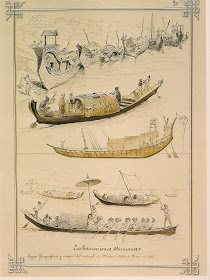

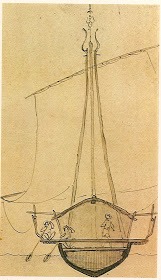

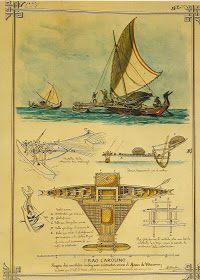


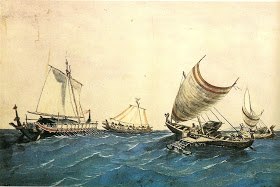

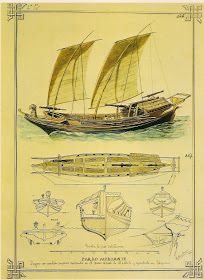
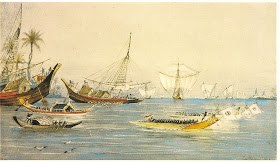

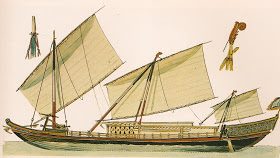

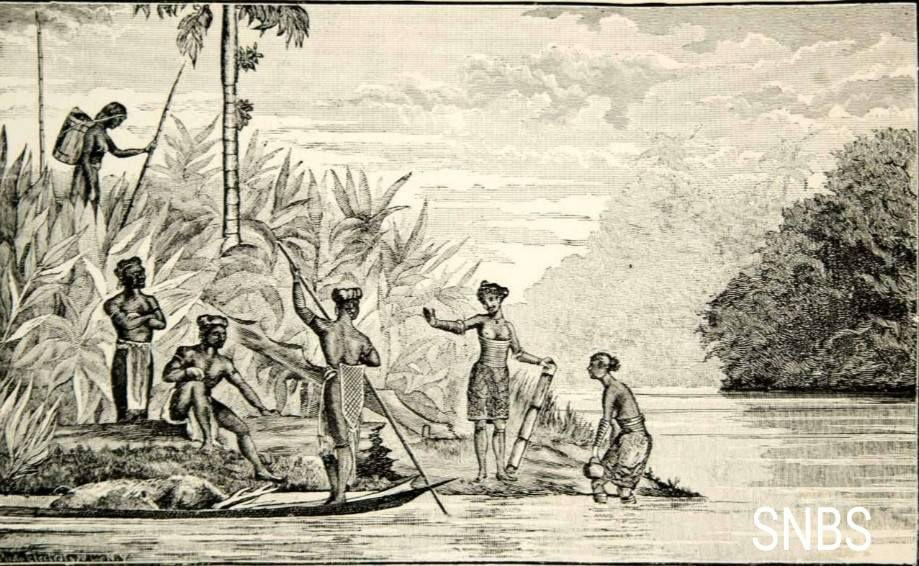

Comments